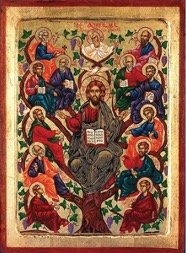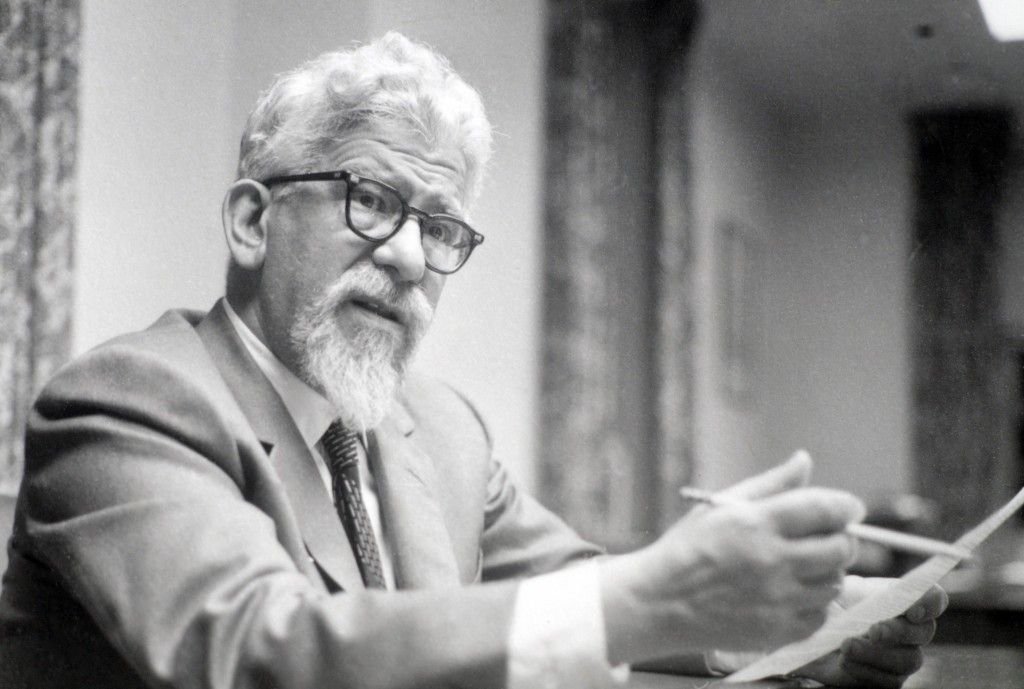What I Read this Summer
After a long summer, I'm back with season two of Notebooks. We'll plan for monthly going forward, though the spirit of inspiration may prompt other writings.
As a child, returning to school in the fall usually meant a composition titled "What I did on my Summer Vacation." So instead of telling you about wonderful bike trips, camping in Canada, some challenging work-related items, an epic convention filled with Robert's Rules of Order, and two weeks of home care, I will share some thoughts of what I read.
-
My Lectio Divina this summer used the sacred texts of Mary Oliver. Her greatest hits collection, Devotions: The Selected Poems of Mary Oliver, helps me each morning remember why I am human and how that humanness is rooted in the sacred wonderland of the natural world. While some may argue that Lectio Divina, an ancient practice of prayerful reading of texts, should only employ a religious text from a religious tradition, I beg to differ. Expanding the repertoire of sacred texts to include such meditations as these:
"Someone I loved once gave me a box full of darkness. It took me years to understand that this, too, was a gift."
Or
“Instructions for living a life.
Pay attention.
Be astonished.
Tell about it.”
Or
“to live in this world.
you must be able
to do three things
to love what is mortal;
to hold it
against your bones knowing
your own life depends on it;
and, when the time comes to let it go,
to let it go."
Many of my summer mornings began with a cup of coffee followed by worship alongside Mary.
The Lost Notebooks of Sisyphus by Phil Cousineau surprised me halfway through the summer. I heard a lecture by Phil via Zoom for the CG Jung Institute of New York in July. He tells stories as your old uncle used to, only with a flair for the magic of enchantment. This book helps the reader realize the ancient myth of Sisyphus is not about the futility of life but the living of life. Our typical understanding of this old king of Corinth revolves around a life of hopeless frustration. We roll the stone up the mountain, only to see it roll back down again. What's the point? But Cousineau helps us understand the story as a relatively accurate description of life. The gods promise Sisyphus that if he can get that rock to the top and roll it down the other side, he will be rewarded with freedom from incarceration. Instead, the gods seem to be playing games with him as they have no intention of allowing him his final reward. Yes, that seems like life in the modern world. But Cousineau points out moments in Sisyphus's struggle where he pauses to appreciate a time, a memory, a place. It is in those moments that meaning is found. This book is a refreshingly honest alternative to the narrative of consumer capitalism, which tells us all a life. That lie is that, somehow, there is a day when life is complete. We win the prize, celebrate victory, and all is well. Ask any athlete who has won a super bowl if they are satisfied. No, they return for another season. Ask any mother if all her dreams are complete after having delivered a new infant into the world. No, because the next day, there are diapers, and the following year is a new phase of parenting. The epic of Sisyphus tells an honest story; along the way, we lean into those moments that give us joy, peace, and meaning.
Soul Care in African American Practice by Barbara Peacock allowed me to expand my view on how my quest for a mature spirituality benefits from a broader engagement. Short chapters on Rosa Parks, Frederick Douglas, Martin Luther King, Jr, Reneeta Weems offer insights into the historical, spiritual practices of the Christian faith. I bought this book to help prepare for a class I'm teaching this January in the Doctor of Ministry program at the United Lutheran Seminary. It sat in the pile of books next to my desk for months. But, somehow made its way into a bag for a mid-summer trip. You'll view these people's lives, teachings, and efforts through a more profoundly spiritual lens after reading this book. Rosa Parks is well known for her refusal to move while riding that bus in Montgomery, Alabama. But Peacock helps us see Ms. Parks as a saint rooted in prayer and meditation. These resources give her the strength of her convictions.
I finally got around to reading Richard Rohr’s The Universal Christ. Only Father Rohr can pull from many sources to weave a book like this one. So often in our contemporary world, Jesus Christ is lifted in a manner that seems to say more about the speaker than the rabbi from Galilee. Today that usually means invoking Jesus Christ to accommodate one's political agenda. The last time I watched CNN, I heard a minister invoke the Nazarene as justification for the attempted overthrow of the US government. Sigh! I see these things and worry that those with little exposure to Christianity assume this perversion is the only expression. But Rohr gives the rest of us hope and a language to talk openly and warmly about Christ. He paints an all-embracing sacredness of love and interconnectedness. Christ is understood as the eternal spirit that not only connects all of life but is all of life. Yes, this could all be construed as a bit too mystical for some, though I loved it. Rohr shows so many practical ways to enter into his theology. One small example is his use of the great teachers of the past, such as St. Bonaventure (1221-1274), who taught a way to work up to loving God by loving the humblest and simplest of things. I have a friend who recently adopted a small dog, a Shih Tzu. She has come to love this dog with her whole being. The adoption is a healing balm to her grief over having lost her partner for many decades. "I think this dog is helping me to love again," she told me. Rohr writes
“Don’t start by trying to love God, or even people; love rocks and elements first, move to trees, then animals, and then humans…It works. It might be the only way to love, because how you do anything is how you do everything." (p. 51)
Lastly, I reached back a few decades and re-read Thomas Cahill's bestseller from the 1990s How the Irish Saved Civilization. I loved this book when it first came out, but I'd forgotten why. Cahill has a gift for making history come alive. This book tells the story of the efforts of Irish monks and scribes to preserve the library of books from ancient antiquity. But, again, I'd forgotten his portrayal of a people who discovered the love of learning. As the Roman Empire collapsed and all of Europe entered the dark ages, the Irish copied and multiplied the works of the Greek Philosophers, Christian theologians, and ancient histories. Their love of learning not only returned these works to Europe several hundred years later but established the centers of knowledge, the monasteries, and the universities without which western civilization and all the discoveries and inventions might not have occurred.
-
I'm working on the next issue of notebooks, which will focus on our need to grow, strengthen, and exercise our symbolic intelligence. In an age of anxiety, I see more and more people defaulting to literalistic interpretations of texts, both sacred and secular. Of course, there is value in careful reading, but we're in grave danger of losing the wisdom of a symbolic way of approaching life.























